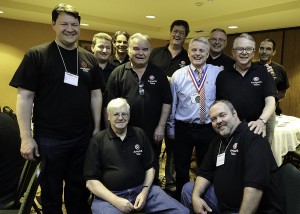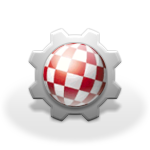 FUSE is short for Filesystem in Userspace. FUSE was created to enable non-privileged users to run file systems outside of the kernel which is a big deal for Unix-like operating systems. In AmigaOS, everything runs in userspace so FUSE is not nearly as important for Amiga users. What makes FUSE valuable is all the file system implementations which use FUSE such as NTFS, ext2, ZFS, etc.
FUSE is short for Filesystem in Userspace. FUSE was created to enable non-privileged users to run file systems outside of the kernel which is a big deal for Unix-like operating systems. In AmigaOS, everything runs in userspace so FUSE is not nearly as important for Amiga users. What makes FUSE valuable is all the file system implementations which use FUSE such as NTFS, ext2, ZFS, etc.
The Amiga Operating System implementation of FUSE has been realized via a project called Filesysbox by Leif Salomonsson. A special thanks goes out to Leif for allowing his hard work to be utilized.
Amiga programmer extraordinaire Fredrik Wikström was then commissioned to port Filesysbox over to AmigaOS. Fredrik took the original code and updated it to AmigaOS 4.1 standards. This work included utilizing advanced DOS features such as object notification and the new file system API which seeks to completely avoid the esoteric DOS packet interface. Colin Wenzel is the main man behind the advanced DOS features.
 In order to test whether Filesysbox was working properly we needed a file system to go with it. NTFS-3G by Tuxera was chosen for this purpose. Fredrik also ported a full suite of tools to go along with NTFS itself.
In order to test whether Filesysbox was working properly we needed a file system to go with it. NTFS-3G by Tuxera was chosen for this purpose. Fredrik also ported a full suite of tools to go along with NTFS itself.
Both Filesysbox and NTFS-3G are contributions being offered to registered AmigaOS users via AmiUpdate. The software licenses require that the source code be made available so registered users can download the matching source code from Hyperion’s web site in the downloads section.
 It is hoped that 3rd party developers will become interested in porting more file systems in the near future whether they are via the FUSE API or the new DOS file system API. The upcoming SDK will include everything you need. In the mean time, please feel free to utilize the provided source code and the AmigaOS support forum for assistance.
It is hoped that 3rd party developers will become interested in porting more file systems in the near future whether they are via the FUSE API or the new DOS file system API. The upcoming SDK will include everything you need. In the mean time, please feel free to utilize the provided source code and the AmigaOS support forum for assistance.
Finally, a big thanks needs to go out to the AmigaOS beta testing team for risking their hard drive partitions while testing NTFS-3G and Filesysbox. It is demanding and potentially destructive work that should not be taken for granted.




